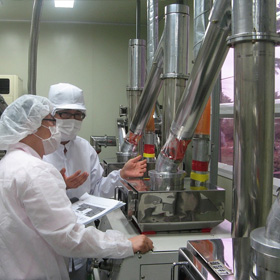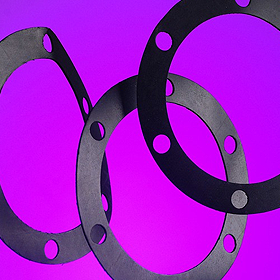
Seal incorruptibility plays an important role in the food and beverage industry. Primarily, the gaskets employed in this hygiene-sensitive arena are designed to adhere to stringent health and safety regulations, which means they stop leaks in factories where consumable items are processed. Cross-contamination is eliminated when these system-essential seals function optimally. Meanwhile, engineering reliability creates a formidable pairing when balanced against food-compliant sealing technology.
Gaskets Segregate Questionable Fluids
It might seem counterintuitive to think of a food manufacturing area as a potentially unsanitary place, but multiple fluid streams are being processed here, and not all of them are fit for consumption. A top-notch mechanical seal obviously stops consumable matter from leaking, but it also prevents waste-filled conduits from discharging nasty slime, the blood and fat left over from a meat cutting operation, for example. Powerful mechanical barriers, therefore, keep leftover waste far away from edible products.
Designed for Harsh Conditions
In governing this safe-working environment, sanitation protocols rate highly because this is a factory setting where the final product is bound for human consumption. Still, curiously, the challenges encountered here are every bit as seal-fatiguing as any chemical processing plant, for food and beverage installations are loaded with active ingredients. Acids are present in blood, meat, and fruit, so elastomer seals must be designed from materials that are known to resist these mildly corrosive fluids. Likewise, temperature extremes are often enforced in food-carrying and processing plants, so pipe and machine junctions must be fitted with space eliminating inserts that won’t fail when very high or very low temperatures rule the workspace.
The Challenges of the Food and Beverage Industry
Mechanical joints, the inserts that securely bind one mating surface to the next, are critically important in a chemical processing scenario, but this assertion is just as true when it’s applied to a food and drink processing facility, for edible and drinkable stuff can cause fabricated seals to wear quickly. Built tough, the material also needs to be chemically neutral, which is an important feature if flavour is to be preserved. Additionally, alcoholic liquids and carbonated fluids carry their own unique challenges, so the flattened profile of the seal requires pressure-handling aptitude, all so that the delicious liquids remain properly contained.
What’s being conveyed here is the notion that consumable organic stuff is every bit as difficult to contain as a non-organic pressurized chemical. The gaskets in the food and beverage industry, therefore, must be as adept as their industrial cousins, for they’re there to stop contamination, prevent bacterial growth, and reinforce a sanitary workflow.

The dictionary definition of a fluid-conveying pipeline describes long conduits carrying liquid commodities over great distances. They transport combustible gasses, liquids, and even provide a secure route for water when arid regions run dry. Comprised of rolled sections of corrosion-resistant steel, a rigid material backbone that’s manufactured tough, the only potential weak spot in this long chain is the flange that couples the pipe sections, but flange gaskets for pipeline connections soon remedy this situation.
Pipelines Adapt to Their Terrain
The steel used in an underwater pipeline defeats salt water with the same ironclad aptitude as the alloys used in underground fuel channels. Similarly, cross-country fuel lines assume outsized proportions as they travel across hundreds of kilometers of harsh land. The weather freezes and heats the alloys used in the overland pipes while acidic soil conditions try to eat into the high-grade steel of a subterranean pipe. The metal used in these conduits just won’t leak, but the gaps between each flange will seep over time, which is why flange gaskets for pipeline connections are manufactured to the highest engineering standards.
Built with Repeatably Leakproof Characteristics
A single misbehaving gasket is quickly tracked down when it’s part of a small network of conduits, but lengthy pipelines use hundreds of individual tubes to create a lengthy metal artery. Every section needs its flange-mating gasket, so every one of these seals must be designed to deliver reliability above all else. The possible consequences of a leaking gasket in this situation are dire, for the resulting leak could poison the oceans and land where the pipeline resides, thus incurring an ecological disaster.
A Union of Mating Flanges
Calculations that provide minimum and maximum tubular wall thickness ratings are obviously important parameters here, but so is the provision of a proper sealing mechanism. The bolts and nuts, welding principles, and flange types employed in these intermittent junctions dictates the overall integrity of the line, so monumental resources are engaged when addressing the tiny gaps that exist on flange surfaces. The fastening mechanisms are typically fabricated from carbon steel, so the inserted gasket will be subjected to challenging compression extremes. In offsetting this necessary tightening force, composite gasket materials have become standard. This select sealing group includes spiral-wound seals, Teflon-imbued variants such as PTFE (Polytetrafluoroethylene), and stainless steel windings that act as robust substitutes.
High pressures keep combustible gasses and liquids flowing over great distances, so flange gaskets for pipeline connections must be designed to handle these internal stresses. Indeed, these large-scale engineering considerations make pipeline design one of the most challenging engineering projects around the globe.